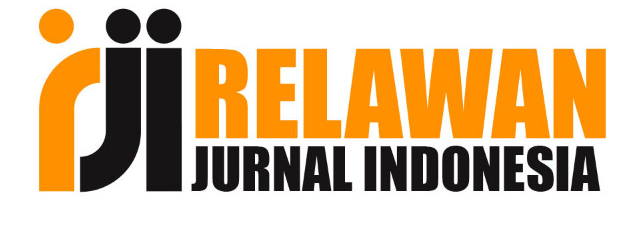Analisis Penerimaan Pengguna Sistem Informasi Akademik Menggunakan Integrasi UTAUT (Unified Theory Of Acceptance Use Of Technology) Dan TRA (Theory Of Reasoned Action)
DOI:
https://doi.org/10.36982/jiig.v12i2.2055Abstract
The Sumatera Selatan University (USS) is an educational institution of Palembang city that is committed to providing the best service to students as an effort to improve the quality of education. One of the academic endeavors is to implement information system. Implementation of the system is expected to help the administrative process to be effective and efficient. This study aims to determine empirically the acceptance of users (Students, Lecturers, Academic Staff) to academic information system of Sumatera Selatan University. This research integrates the theory of UTAUT (Unified of Acceptance and Use of Technology) and TRA (Theory of Reasoned Action) which are used as the basis for explaining the factors that influence technology acceptance. Furthermore, in the data analysis process, the Partial Least Square Structural Equation Model (SEM-PLS) approach was used. The findings of this study indicate that there is a varied relation between exogenous variables and endogenous variables. First, the results of the analysis show that the Attitude (A) and Social Influence (SI) variables have a significant effect on Behavioral Intention (BI). But the variables Performance Expectancy (PE), Effort Expectancy (EE), and were not proven significant. Second, the results of the analysis also show that the variables of Facilitating Condition (FC) and Behavioral Intention (BI) have a significant effect on Use Behavior (UB).
Keywords: Technology Acceptance, Academic Information System, UTAUT, TRA, SEM-PLS
ÂReferences
Aguswidarjono (2010) analisis statistika multivariat terapan. Yogyakarta : UPP STIM YKPN.
Awaluddin, M. and Sukmawati (2017) ‘Implikasi Theory of Reasoned Action dan Etika dalam Meningkatkan Kepatuhan Wajib Pajak Kendaraan Bermotor Melalui Niat (Studi Kasus Pada Kantor Samsat Kabupaten Kepulauan Selayar)’, Journal of Chemical Information and Modeling, 1(9), pp. 11–15.
Dulle, F. W. and Minishi-Majanja, M. K. (2011) ‘The suitability of the unified theory of acceptance and use of technology (utaut) model in open access adoption studies’, Information Development, 27(1), pp. 32–45. doi: 10.1177/0266666910385375.
Fang, W. (2017) ‘Normative Beliefs, Attitudes, and Social Norms : People Reduce Waste as an Index of Social Relationships When Spending Leisure Time sustainability Normative Beliefs, Attitudes, and Social Norms : People Reduce Waste as an Index of Social Relationships’, Journal Sustainability, 9, pp. 12–15. doi: 10.3390/su9101696.
Ghozali, I. (2013) Aplikasi analisis multivariate dengan program IBM SPSS 21, Badan Penerbit Universitas Diponegoro.
Hartono, W. A. and Meiranto, W. (2013) ‘Pengaruh pemanfaatan dan penggunaan sistem informasi terhadap kinerja individu’, of Accounting, 2, pp. 7–9.
Irwan and Adam, K. (2015) ‘Metode Partial Least Square (PLS) Dan Terapannya (Studi Kasus: Analisis Kepuasan Pelanggan terhadap Layanan PDAM Unit Camming Kab. Bone)’, Teknosains, 9(1), pp. 53–68.
Jonathan Sarwono, U. N. (2015) Membuat Skripsi, Tesis, dan Disertasi dengan Partial Least Square SEM (PLS-SEM), C.V Andi Offset. Available at: http://dspace.ucuenca.edu.ec/bitstream/123456789/35612/1/Trabajo de Titulacion.pdf%0Ahttps://educacion.gob.ec/wp-content/uploads/downloads/2019/01/Guia-Metodologica-Ef.pdf.
Lee, Yi-hung, Pingyu Hsu, Yu-Wei Chang, Y.-S. C. (2016) ‘Integrating TRA and TOE Frameworks for Cloud ERP Switching Intention By Taiwanese Company’, in Pasific Asia Conference on Information Systems, p. 5.
Mahyarni (2013) ‘Theory of Reasoned Action dan Theory of Planned Behavior (Sebuah Kajian Historis tentang Perilaku)’, Jurnal el riyasah, 4(1), p. 1. doi: 10.24014/jel.v4i1.17.
Mardiana, N. and Faqih, A. (2019) ‘Model Sem-Pls Terbaik Untuk Evaluasi Pembelajaran Matematika Diskrit Dengan Lms Best Sem-Pls Model to Evaluate Discrete Mathematics Learning with LMS’, Jurnal Ilmu Matematika dan Terapan, 13(3), pp. 157–170.
Maria Magdalena and Sediyono, E. (2018) ‘Analisis Penerimaan Teknologi E-retribusi Pasar dengan Pendekatan Theory of Reasoned Action’, 02, pp. 174–180.
Marliana, R. R. (2019) ‘Partial Least Square-Structural Equation Modeling Pada Hubungan Antara Tingkat Kepuasan Mahasiswa Dan Kualitas Google Classroom Berdasarkan Metode Webqual 4.0’, Jurnal Matematika, Statistika dan Komputasi, 16(2), p. 174. doi: 10.20956/jmsk.v16i2.7851.
Mediyanto, B. and Mahendra, I. (2017) ‘Penerapan Metode Utaut Untuk Memprediksi Behavioral Intentions User Dalam Menggunakan Aplikasi Zabbix’, Jurnal Ilmu Pengetahuan dan Teknologi Komputer, 3(1), p. 10.
Mtebe, J. S. and Raisamo, R. (2014) ‘Investigation Students’ Behavioral Intention to Adopt and Use Mobile Learning in Higher Education in East Africa’, International Journal of Education and Development using Infomration and Communication Technology, 10(3), pp. 12–14.
Nabil, D., Mosad, A. and Hefny, H. A. (2011) ‘Web-Based Applications quality factors : A survey and a proposed conceptual model’, Egyptian Informatics Journal, 12(3), p. 3. doi: 10.1016/j.eij.2011.09.003.
Nawawi, F. I. (2014) ‘Perancangan Komunikasi Visual Berbasis Multimedia Pada Lembaga Penyiaran Publik Radio Republik Indonesia Pro2 Semarang’, komunikasi visual.
Nikmatus Sholiha, E. U. and Salamah, M. (2015) ‘Structural Equation Modeling-Partial Least Square untuk Pemodelan Derajat Kesehatan Kabupaten/Kota di Jawa Timur (Studi Kasus Data Indeks Pembangunan Kesehatan Masyarakat Jawa Timur 2013)’, Jurnal Sains Dan Seni ITS, 4(2), pp. 169–174.
Nuari, E. S., Nurkhin, A. and Kardoyo, K. (2019) ‘Analisis Determinan Pemanfaatan Edmodo Dengan Menggunakan Unified Theory of Acceptance and Use of Technology (Utaut)’, Jurnal Pendidikan Akuntansi Indonesia, 17(1), pp. 57–73. doi: 10.21831/jpai.v17i1.26337.
Rahardjo, B. (2014) ‘Analisis Faktor Untuk Mengetahui Pengaruh Personal Selling dan Word of Mouth Tehadap Keputusan Pembelian Suatu Studi Kasus Pada PT. Starmas Inti Alumunium Industry’, Jurnal Fakultas Ekonomi Universitas Budi Luhur Jakarta, 12(1), p. 12.
Rahmawati, D. (2012) ‘Analisis Faktor Faktor yang Berpengaruh Terhadap Pemanfaatan Teknologi Informasi’, Jurnal Ekonomi dan Pendidikan, 5(1), pp. 107–118. doi: 10.21831/jep.v5i1.606.
Raman, A. et al. (2014) ‘Technology acceptance on smart board among teachers in terengganu using UTAUT model’, Asian Social Science, 10(11), pp. 8–9. doi: 10.5539/ass.v10n11p84.
Rinda Noviyanti and Nuhasanah (2019) ‘Faktor Yang Mempengaruhi Kompetensi Nelayan Di Teluk Banten : Menggunakan Partial Least Square- Structural Equation Modelling ( PLS-SEM ) Factors Influencing to The Fisherman ’ s Competency in Banten Bay Using Partial Least Square-Structural Equation Mode’, MarineFisheries, 10(1), pp. 33–44.
Riskadewi, E. S. (2014) ‘Penerimaan Sistem Informasi Akademik Universitas Airlangga Cyber Campus (UACC) Pada Dosen Fisip Universitas Airlangga’, Jurnal Universitas Airlangga, Vol.3 / No, pp. 1
rusli atawirudi, muhamad aziz firdaus & rachmatullaily (2020) ‘pengaruh pelatihan dan budaya kerja terhadap kinerja karyawan’, al tijarah.
Suyanto (2009) step by step Web Desain. Jogjakarta: Andi. Available at: http://khoiruimam354.blogspot.com/2012/11/program-web-desain.html.
Tan, P. J. B. (2013) ‘Applying the UTAUT to understand factors affecting the use of english e-learning websites in Taiwan’, SAGE Open, 3, p. 11. doi: 10.1177/2158244013503837.
Tey, T. C. Y. and Moses, P. (2018) ‘UTAUT: Integrating Achievement Goals and Learning Styles for Undergraduates’ Behavioural Intention to Use Technology’, EAI Endorsed Transactions on e-Learning, 5(17), pp. 3–8. doi: 10.4108/eai.25-9-2018.155573.
Tileng, K. G. and Santoso, D. A. (2013) ‘E-Commerce Adoption Analysis as Online Shop Media’, nil’ Third lnternational Congress 0 11 Interdisciplinary Research and Development, (May 2013), p. 60219.
Venkatesh, V. et al. (2003) ‘User Acceptance of Information Technology: Toward a Unified View’, MIS Quarterly: Management Information Systems, 67(3), pp. 3–35. doi: 10.1016/j.inoche.2016.03.015.
Venkatesh, V. (2012) ‘Consumer Acceptance and Use of Information Technology : Extending the Unified Theory’, MIS Quarterly, 36(1), p. 22.
Wibowo, A. H., Mursityo, Y. T. and Herlambang, A. D. (2019) ‘Pengaruh Performance Expectancy, Effort Expectancy, dan Social Influence Terhadap Behavioral Intention dalam Implementasi Aplikasi SIMPG PT Perkebunan Nusantara XI Surabaya’, Jurnal Pengembangan Teknologi Informasi dan Ilmu Komputer, 3(9), pp. 9047–9053. Available at: http://j-ptiik.ub.ac.id.
Widiatmika (2008) ‘Pengembangan Model Penerimaan Teknologi Internet oleh Pelajar dengan Menggunakan Konsep Technology Acceptance Model (TAM)’, Sistem Informasi, 4, p. 2.
Downloads
Published
How to Cite
Issue
Section
License

This work is licensed under a Creative Commons Attribution-ShareAlike 4.0 International License.










